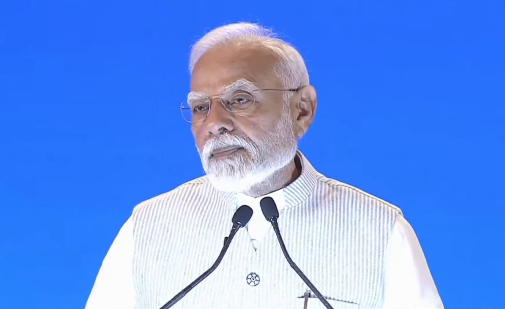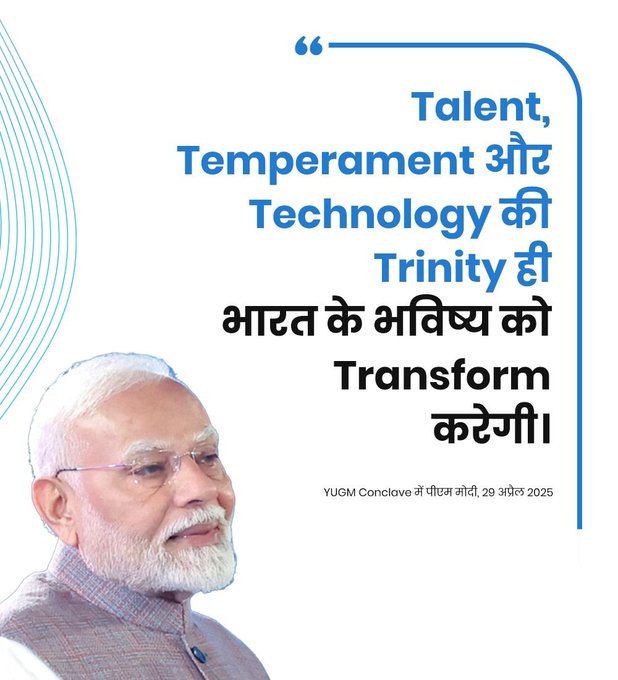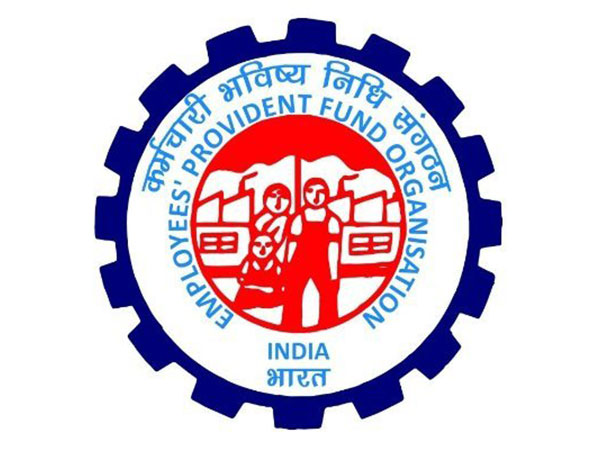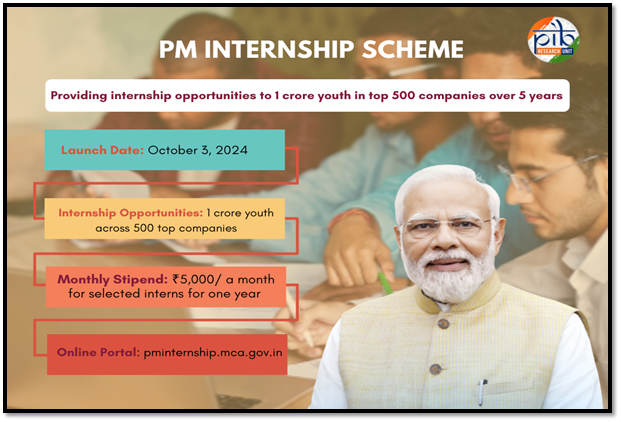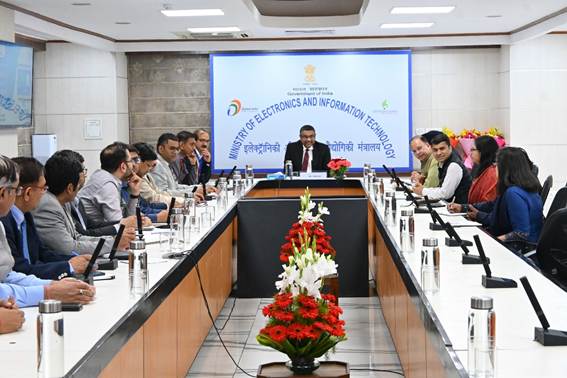Prime Minister Narendra Modi on Tuesday said that the “trinity of talent, temperament and technology” would shape the future of India, as he addressed the YUGM Innovation Conclave at Bharat Mandapam in the national capital.
The conclave, a collaborative initiative between the Ministry of Education and the Wadhwani Foundation, brought together leaders from government, academia, industry, and the innovation ecosystem. PM Modi described the gathering as a “YUGM”—a Sanskrit term meaning confluence—and said it represented a collective push to harness emerging technologies for India’s development.
“The pace of innovation in India has accelerated significantly,” PM Modi said, citing a jump in annual patent filings from 40,000 in 2014 to over 80,000. He also spoke about the creation of the ₹50,000 crore National Research Foundation and the One Nation, One Subscription initiative, which provides students with access to global research journals.
PM Modi further outlined India’s technological milestones, such as the development of the world’s longest hyperloop test track at IIT Madras, advanced nanotechnology research at IISc Bangalore, and the recent creation of India’s first indigenous MRI machine. He said Indian youth were now not just involved in R&D but had become “ready and disruptive,” contributing to real breakthroughs across sectors.
“India’s university campuses are emerging as dynamic centres where Yuvashakti drives breakthrough innovations,” he said, noting that over 90 Indian universities now feature in the Times Higher Education Impact Rankings. He highlighted India’s growing representation in the QS World University Rankings, with the number of Indian institutions in the global top 500 having grown significantly in the past decade.
The Prime Minister also referred to Indian institutions establishing international campuses—including IIT Delhi in Abu Dhabi, IIT Madras in Tanzania, and a planned IIM Ahmedabad campus in Dubai—and the opening of foreign university campuses in India, calling it a step toward enhancing academic collaboration and global exposure for Indian students.
Calling attention to initiatives such as Atal Tinkering Labs—10,000 of which are operational, with 50,000 more announced in this year’s budget—PM Modi said early exposure to technology would prepare children for future challenges. He also cited the Vidya Lakshmi scheme for financial support to students and internship cells set up in over 7,000 colleges as steps to bridge academic learning with real-world experience.
The Prime Minister also announced the inauguration of Superhubs at IIT Kanpur and IIT Bombay, focusing on artificial intelligence, intelligent systems, biosciences, biotechnology, and health technologies. He also launched the Wadhwani Innovation Network, calling it a reaffirmation of India’s commitment to advancing collaborative research, with support from the National Research Foundation.
PM Modi praised the Wadhwani Foundation and its founder, Romesh Wadhwani, for their consistent contributions to India’s education and research sectors. Recalling Wadhwani’s personal story of hardship—fleeing post-partition displacement, battling polio, and building a global business empire—the Prime Minister said, “Romesh Wadhwani’s decision to dedicate his success to India’s progress is exemplary.” He acknowledged the foundation’s work in school education, Anganwadi technologies, and AgriTech initiatives.
Quoting a Sanskrit saying that true life is one of service and selflessness, PM Modi said that science and technology must also serve society. “It is heartening to see that institutions like the Wadhwani Foundation are using science and technology as instruments of service,” he added.
He pointed to the implementation of the New National Education Policy (NEP), the National Curriculum Framework, and the rollout of new textbooks from classes one to seven. The Prime Minister spoke about the development of ‘One Nation, One Digital Education Infrastructure’ under the PM e-Vidya and DIKSHA platforms, enabling digital learning materials in more than 30 Indian languages and seven foreign languages.
He also emphasized the National Credit Framework, which allows students to study diverse subjects simultaneously, and said that nearly 6,000 higher education institutions have established Research and Development Cells to boost the innovation ecosystem. India’s gross expenditure on research and development (R&D) has more than doubled from ₹60,000 crore in 2013–14 to over ₹1.25 lakh crore now, he said.










